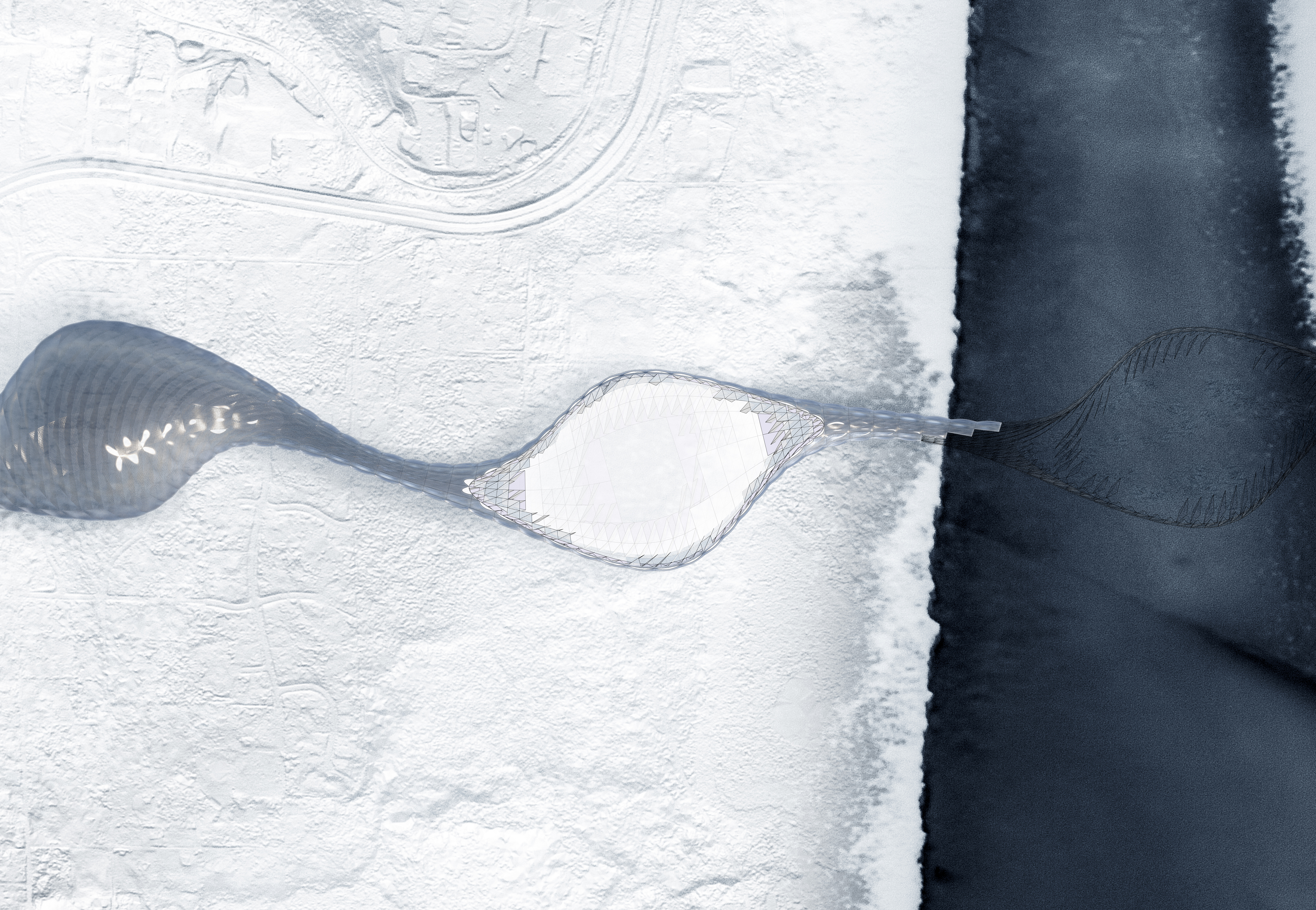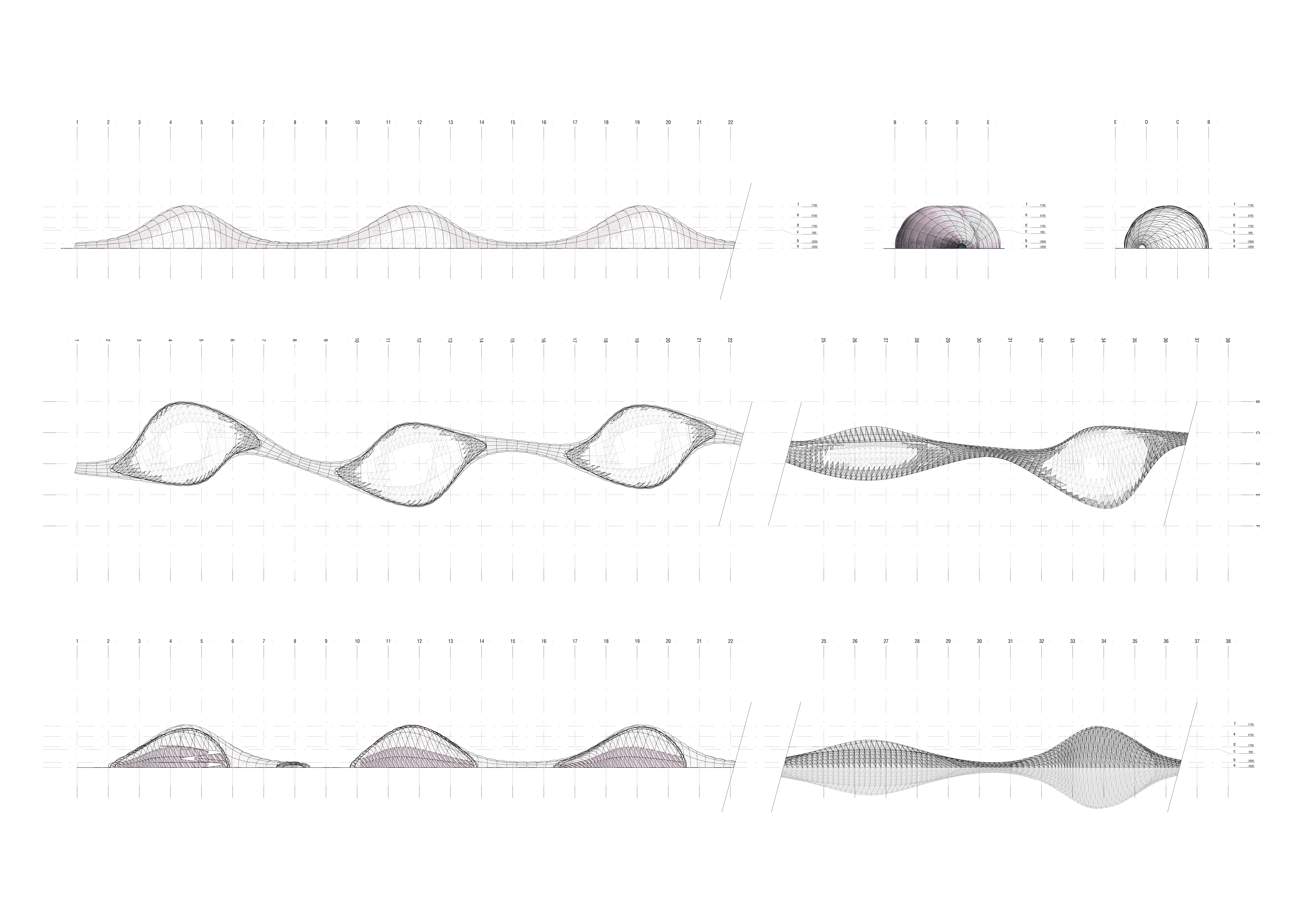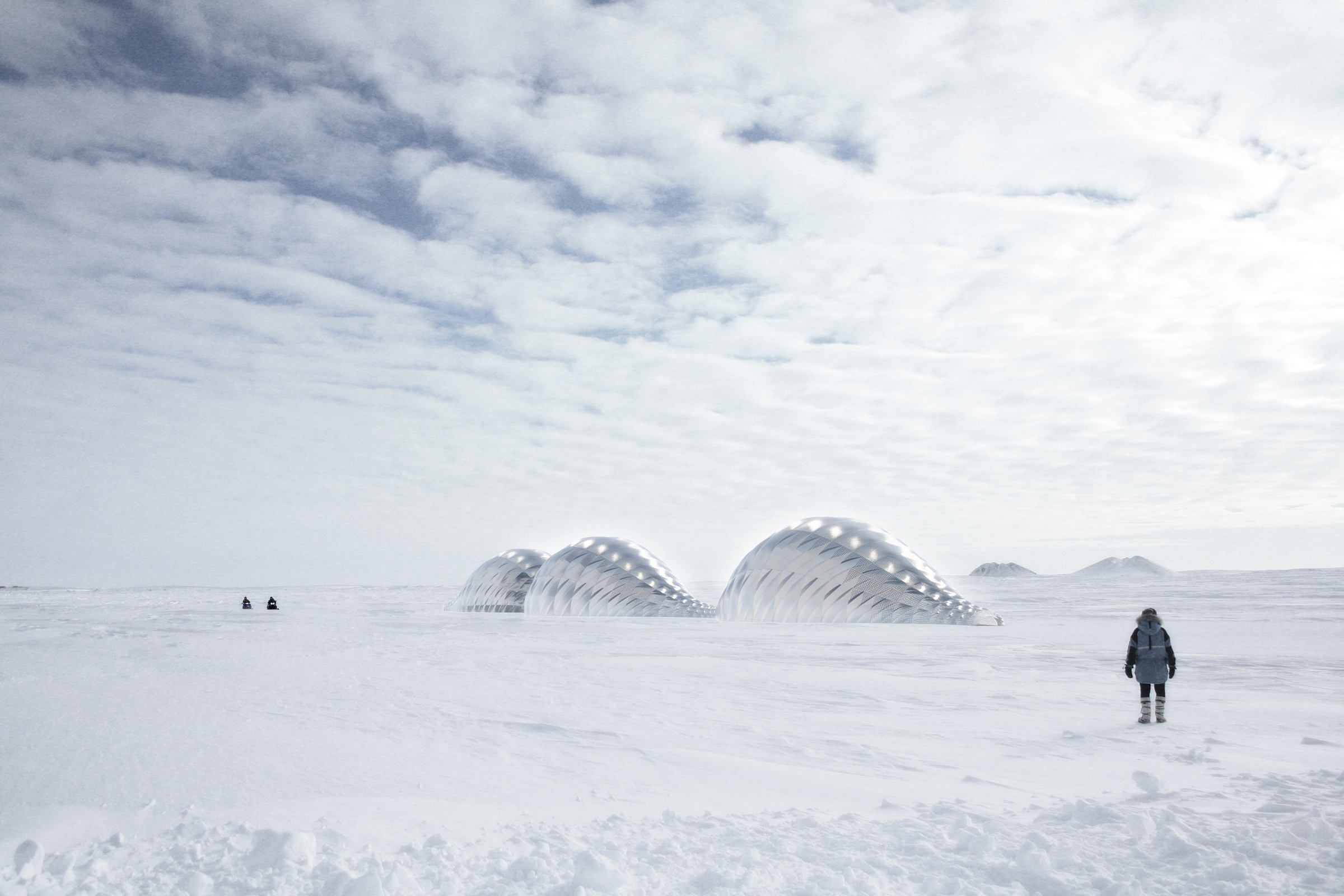Nomadic Infrastructure
This project responds to issues surrounding food scarcity, proposing a lightweight, deployable structure that facilitates the production and storage of food, among other functions, in proximity to remote northern communities and scientific research stations. The self-sustaining system offers a means by which greenhouse vegetables and aquaculture can be harvested and stored both terrestrially and aquatically with minimal need for heavy equipment and servicing, contributing factors to the exorbitant cost of living in the north.
Deployed aquatically and installed along coastal areas, the design proposal offers a semi-permanent solution that facilitates the creation of new transportation corridors along current and future shipping routes in the surrounding waters. The primary design exploration focused on the skin of the structure which not only serves to control its interior climate, but also offers the potential to harvest renewable sources of energy that satisfy its demand for electricity.
The system receives power from the sun, with solar film integrated into the intermediate layer of skin. Further potential exists to harvest tidal energy within the aquatic component. Redundancy of structure and automation in deployment were primary concerns, therefore the envelope is designed as multiple layers of flexible material that allow it to be self-supporting, while containing its interior pressure and maintaining the shape of its space. The inflation procedure would occur autonomously.


© 2026 gandhi habash / architecture
